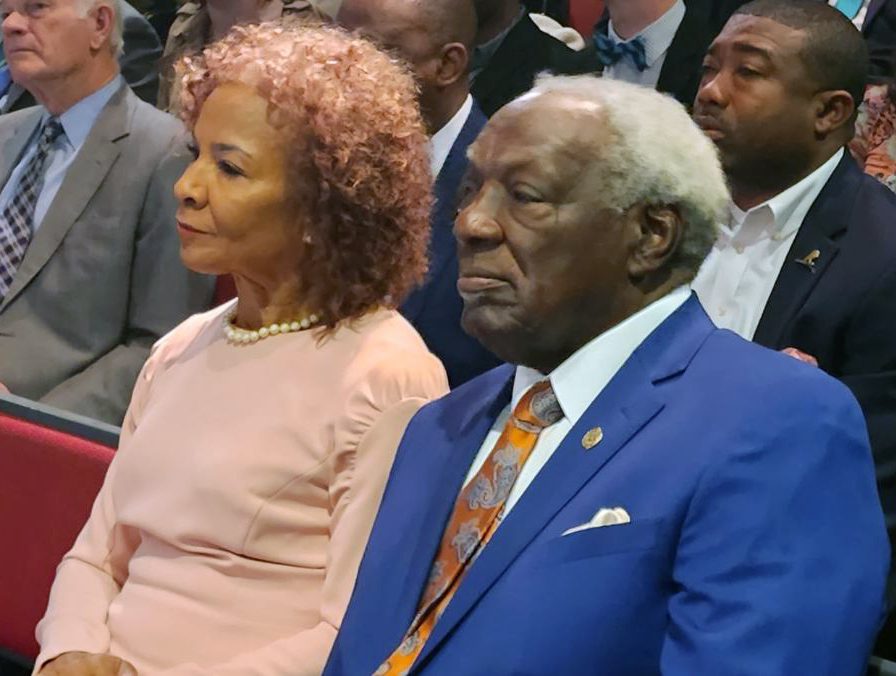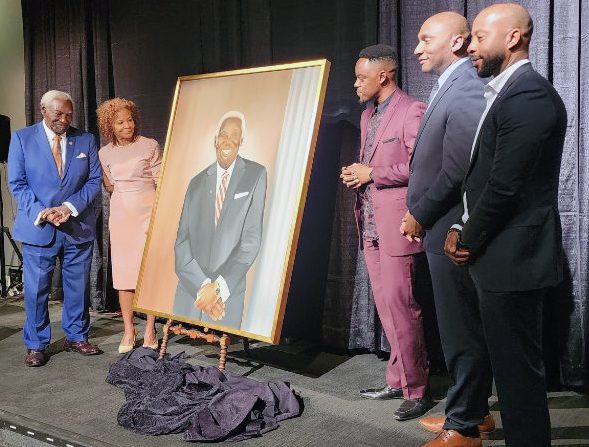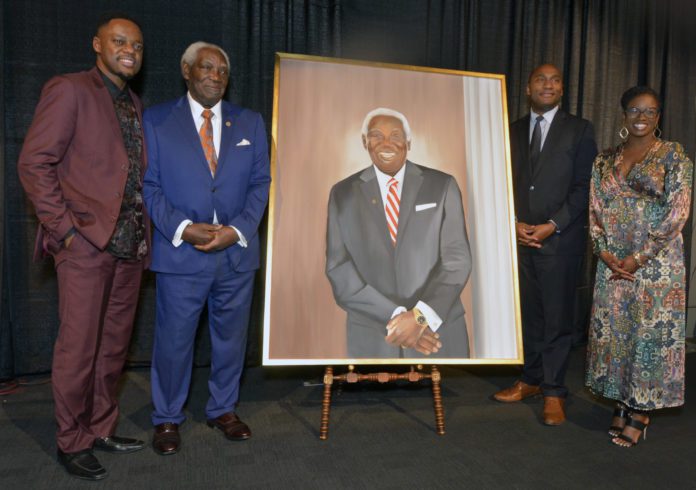It was an “extraordinary” affair.
And that’s straight from the center of attention – civil rights advocate and former Shelby County commissioner Walter L. Bailey Jr. as he watched the unveiling of his portrait Tuesday (Dec. 13) during a ceremony at the National Civil Rights Museum.
“I thought the whole occasion was just extraordinary,” Bailey said.
“So many came out to see this unveiling of my portrait … and I was happy to share the moment with so many. And the portrait – extraordinary.”
The portrait will hang in the Walter L. Bailey Jr. Criminal Justice Center at 201 Poplar.
The facility, commonly known as 201 Poplar, was named after Bailey, a lawyer, in 2018 in recognition of his long service on the County Commission, and his legal and legislative battles for civil rights, equal justice and the elimination economic inequities.
The public unveiling was attended by old colleagues, family friends, and community supporters, who desired to witness the historic moment.
“The portrait will hang in the building that was recently named in my honor, but the decision was made to host the unveiling at the National Civil Rights Museum,” said Bailey. “It was because of the parking situation, but I thought the setting was quite fitting.”
Bailey was a young, idealistic attorney who challenged the racial and economic inequities in Memphis and Shelby County more than 50 years ago. He gained national prominence when he took on the case that desegregated Shelby County Public Schools, as well as handled the legal defense of Dr. Martin Luther King Jr., during the sanitation strike in 1968.
Perhaps his most famous legal success was the landmark Supreme Court ruling that established that law enforcement officers could not use deadly force when a suspect is fleeing unless his or her life is threatened.
Bailey also was a decades-old advocate for removing the statue of Nathan Bedford Forrest for the then-city-owned Medical Center park that was formerly named for Forrest. The statue was finally removed in 2017.
Bailey was reflective about the unveiling.
“The naming of the building to honor me, and the unveiling of this portrait shows how much we have evolved in Memphis and Shelby County,” said Bailey. “Sure, there are still challenges that have to be faced, but we have come so far. The Civil Rights Museum held great significance for me in that moment yesterday.”

George H. Brown, former Circuit Court and Tennessee Supreme Court judge, who was there to witness the unveiling, was also reflective about the occasion.
“Walter and I went to high school together,” said Brown. “We have been life-long friends, and we were colleagues for more than 50 years. I thought it was a great event. I have so much regard, respect and love for Walter Bailey. We have come a long way in this city. This was an affirming and satisfying moment.”
In 1971, Bailey was elected to serve out a term on the Shelby County Commission, and in 1972, he was elected to a full term. Bailey served in this capacity until 2006, when term limits prohibited him from running.
In 2010, Bailey ran again for the commission seat, once the mandated time had passed. He was unopposed. Bailey stepped down in 2018.
Bailey was born on August 21, 1940. He graduated from Booker T. Washington High School and attended Southern University on a football scholarship. He became involved in civil rights activities organized by his brother, the late Judge D’Army Bailey.

The portrait was a creation of internationally acclaimed artist Carl F. Hess, a native Memphian who now lives in Texas. His subjects have included mayors, federal judges, ambassadors, governors, bishops, and pastors.
His portraiture famously includes former President Barack Obama, and his wife, Michelle Obama.
Hess is one of the most highly acclaimed, African-American artists in the country. When he was in sixth grade, his art teacher recognized an “artistic eye and talent.” He was sent to Memphis College of Art for classes on a full scholarship.
Hess continued art classes throughout grade school. Hess has publicly credited the guidance of his art teachers at Overton High School for the level of success he enjoys today.



